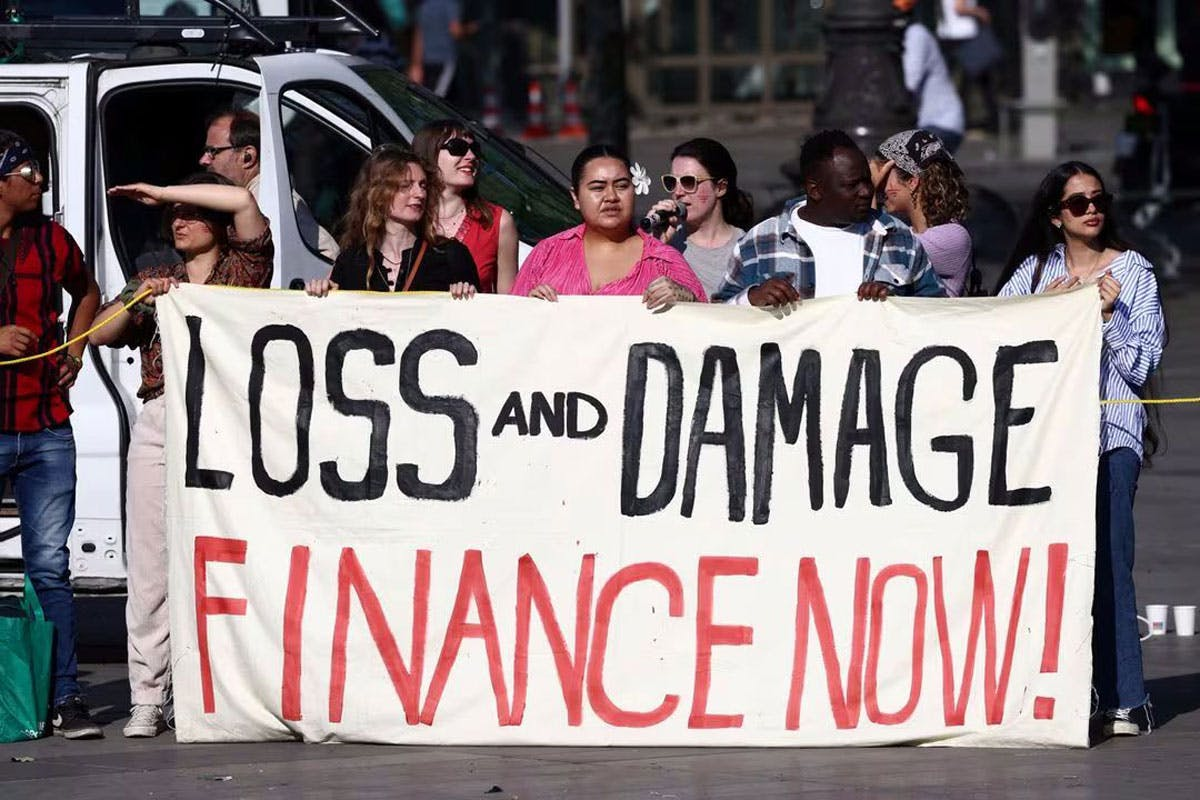Free Courses Sale ends Soon, Get It Now


Free Courses Sale ends Soon, Get It Now



Copyright infringement not intended
Picture Courtesy: https://www.onenews.ph/articles/phl-secures-loss-and-damage-fund-board-seat
Context: The delay in developed countries nominating members to the Loss and Damage Board could result in a delay in disbursing the pledged funds at COP28, posing a potential threat to millions affected by the severe impacts of climate change.
Key Highlights
|
Loss and Damage Fund |
|
|
Key Points |
Description |
|
What is it? |
A financial mechanism was announced at COP27 to help developing countries that are especially vulnerable to the negative impacts of climate change. |
|
Purpose |
To provide financial assistance to developing countries those are disproportionately impacted by the adverse effects of climate change, despite contributing relatively little to the problem. |
|
Significance |
The establishment of this fund marks a major breakthrough after decades of advocacy by developing nations. It acknowledges the historical responsibility of major emitters and aims to bridge the gap between climate impacts and financial support. |
|
How it Works |
Contributors: Primarily developed countries, the largest historical polluters, are expected to contribute to the fund. Other potential contributors include emerging economies and private donors. Recipients: The fund focuses on particularly vulnerable countries experiencing severe climate-related disasters and facing irreversible loss and damage (e.g., rising sea levels, extreme weather events). Governance: A Loss and Damage Board, composed of representatives from both developed and developing countries, oversees the fund's operations, policies, funding decisions, and overall strategic direction. |
|
Establishment |
COP27: The concept of a Loss and Damage Fund was solidified at the COP27 climate summit in Egypt (2022). COP28: The fund was formally established at COP28 (2023). |
|
Operationalization |
Interim Trustee: The World Bank will likely act as an interim trustee, hosting the fund's secretariat and managing its operations under specific conditions set by developing nations. Ongoing Process: The Loss and Damage Board is tasked with further defining the fund's policies, procedures, and funding mechanisms. This includes how funds will be allocated and the process for submitting proposals. |
|
Challenges |
Pledges v/s Needs: The initial pledges to the fund (over $700 million) are significantly lower than the estimated losses faced by developing countries. More substantial contributions are needed. Board Stalemate: Delays in developed countries nominating their representatives to the board could hinder timely decision-making and the fund's efficiency. World Bank Concerns: Developing countries' reservations about the World Bank's role as trustee could complicate the fund's execution. |
|
Future Outlook |
Success depends on: Timely nominations to the board, substantial financial pledges, streamlined processes, and fair and equitable distribution of funds. Potential for Change: The Loss and Damage Fund has the potential to provide crucial support for vulnerable communities and act as a catalyst for broader climate justice. |
Conclusion
Must Read Articles:
LOSS AND DAMAGE FUND: https://www.iasgyan.in/daily-current-affairs/loss-and-damage-fund-25
|
PRACTICE QUESTION Q. The loss and damage fund cannot be seen solely as an aid mechanism. How can this fund be structured to empower vulnerable communities, promote long-term resilience, and encourage transformative, sustainable adaptation strategies to prevent future loss, rather than simply providing a payout for past damage? |
© 2024 iasgyan. All right reserved